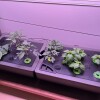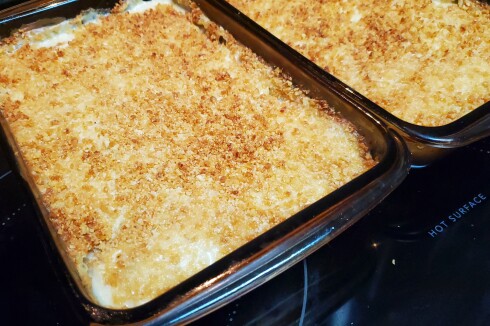Q: I like to give my mother new plants as gifts, and over the years, I’ve given her a variety of perennial flowers, shrubs and fruit plants. This year, I’d like to get her something not normally thought to grow in this area — a magnolia. I’ve read of a few varieties that are said to grow in Zone 4, but I’ve come to learn that doesn’t necessarily mean they will thrive. Could you point me in the direction of specific varieties of magnolia that will thrive in our climate? — Kevin B.
A: I’ve got just the thing for you! Spring Welcome Magnolia is a recent introduction from North Dakota State University’s Woody Plant Improvement Program, and has tested winter-hardy to Zone 3, making it well-adapted to northern growing regions.
ADVERTISEMENT
Spring Welcome’s densely branched flowers are pale pink in bud, gradually opening to pristine white. As the name implies, it blooms in early spring, with flowers opening before the leaves do.
Spring Welcome becomes a large shrub or small tree, growing up to 20 feet high and spreading 20 feet in width, with a dense, oval to rounded shape. It can be grown either single of multi-trunked, and is recommended as a large foundation shrub or small specimen-type tree.
For best flower formation, Spring Welcome should be planted where it receives full sun. It’s adaptable to both alkaline and acidic soil types, preferring rich, well-drained soil.
Spring Welcome is sure to be a head-turner in any landscape. It’s no longer necessary to travel down South to enjoy outstanding magnolia blossoms.
Newer woody plant cultivars become more widely available as time goes on. Check with locally owned garden centers to see if they carry Spring Welcome Magnolia. It was introduced a few years ago, so production should be gaining momentum with ever-increasing availability.
Q: My spider plant has gotten quite large, and the plant has gotten floppy. I’ve started new little plants for the spiders, but I’m wondering if the old, central plant can be cut back, and if it will regrow. — Jenna M.
A: Very old spider plants do eventually seem to outgrow themselves. The first step, as you’ve done, is to start new plants from the baby spiders. But the mother plant doesn’t have to discarded.
ADVERTISEMENT
I’ve found that the central old plant can rejuvenate itself with a drastic cutback. After the hanging offsprings have been removed from the plant, shear the entire plant back to only one or two inches above the soil line.
This is also a great time to repot the plant into fresh potting mix. The root system is usually extremely massive, so pruning away the outer perimeter of the rootball stimulates new growth.
Spider plant leaves arise from a central crown, where leaves meet roots, and old plants can also be divided by cutting down through the crown with a sharp knife or saw.
After pruning back the entire plant, you are left with a newly potted spider plant with stubs of leaves only an inch or so long. If the plant was healthy otherwise, new leaves should soon arise from the central crown, giving the plant a fresh reboot.
Q: I know you’ve told us before, but can you remind me when it’s time to start my tomato seeds? I always seem to jump the gun, and the plants get too tall and weak. — John S.
A: The target date for starting tomato seeds indoors is April 1. If started on a germination mat or a warm location, the seedlings emerge quickly and grow strongly.
Start the seeds in a tray and then transplant the seedlings into individual pots or cell packs when the first set of true leaves appear. Transplanting the seedlings creates a stronger plant than seeding directly into the finished pot or pack.
ADVERTISEMENT
If seeded April 1, tomato plants will be just the right size for transplanting into the garden during the last half of May, when soil and weather warm sufficiently for these heat-loving plants.
If you have a gardening or lawn care question, email Don Kinzler, NDSU Extension-Cass County, at donald.kinzler@ndsu.edu . Questions with broad appeal may be published, so please include your name, city and state for appropriate advice.













